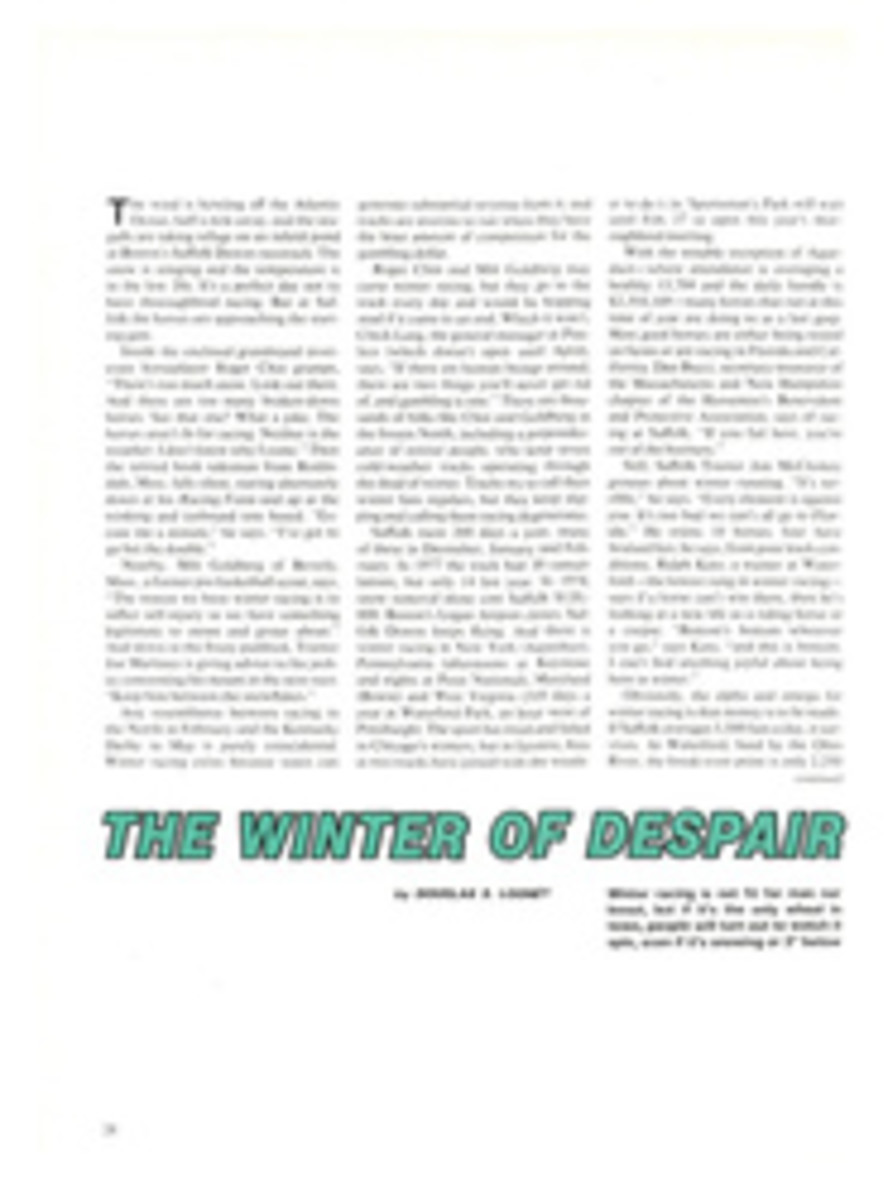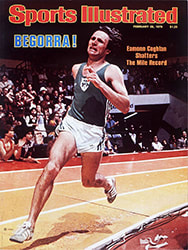
And so now we are seven
Three years ago the hottest entry in the Southern Ocean Racing Conference was a new 41-footer from San Diego named Williwaw. Two years ago it was the novel Imp, a 40-foot San Francisco hull that, because of its fancy interior pipe skeleton, was nicknamed the "unbeatable boiler room." Last year's top boat was Mr. Jumpa, a beamy, 36-foot, ultralight New Zealand boat that resembled a truncated ukulele as much as an ocean racer. Yet none of these distinguished hulls ever won an overall SORC title for the simple reason that there was no such title. In an effort to keep the older boats coming back, the people who run the circuit set up two divisions in 1976, one for the avant-garde and another for the slightly elderly. Nevertheless, if there had been a prize for the best in the whole fleet, Williwaw, Imp and Mr. Jumpa would have gotten it, and the older hulls would have been well in the ruck.
To take two cases, in 1977 a 5-year-old 36-footer called Abino Robin won her older division class handily, taking four firsts and two fourths in the six-race series. Yet, measured against the whole fleet, her best finish was 28th out of 68. Last year a 6-year-old 36-footer named Hoodwinker took a first, a fourth and two sevenths to win her class, but her best overall placing was 58th in a fleet of 84.
This year an even more elderly 7-year-old boat named simply Robin seemed out to prove that old folks could do it all, though not without difficulty. In her first race, a short, triangular affair off St. Petersburg, her troubles were minor and she did handsomely. In that race fog was the problem, and quite a few of the hulls with blue-ribbon crews were low of the last mark and had to tack up to it. Largely by dint of excellent navigation, Robin won her class and finished 10th overall out of 75, a remarkable performance considering that 27 of her rivals were less than a year old.
That was Robin's last easy race. In the next test, on a course of roughly 400 miles from St. Petersburg around the Florida peninsula to Fort Lauderdale, Robin suffered the worst kind of trouble in gut-busting weather. With nearly three-quarters of the course still ahead, she broke her boom in 25- to 35-knot winds. She finished with a loose-footed mainsail clewed to a spinnaker pole jury-rigged as a boom. An hour after the boom went, when her crew tried to change to a smaller jib in rising air, the halyard jammed and the jib would not go fully up or come down. Retirement at Key West was a logical option, but Robin carried on and was rewarded for her perseverance. She again won her class and—mirabile dictu!—despite her crippled condition beat every one of her 63 rivals, new and old, on corrected time.
In the third race—a 187-mile triangular course from Miami across the Gulf Stream to the Great Bahama Bank, then back to West Palm Beach and down to Miami—Robin had more difficulties. On the first leg, while the crew was trying to ease a loaded spinnaker in 20-knot wind, a sea caught the stern and swung it so that the spinnaker filled on the opposite side. The boat went over for nearly 10 seconds, its spreaders in the water, its hands hanging onto whatever they could grab. The spinnaker split from the pressure of the water it had picked up, and it was 10 minutes before Robin had another workable foresail up. How did old Robin fare after this delay? Once again she won her class, and once again she beat the whole fleet—65 this time—on corrected time.
At the end of those three races Robin had accumulated 1,091 points, 29.5 more than her nearest rival, High Roler, a new 44-footer from San Diego. Granted that Robin's standing midway through the series was helped by a boat-handicapping system favoring older vessels, it was still a remarkable achievement—somewhat as if Mauri Rose were to show up at the Indianapolis Motor Speedway with an old four-banger Offenhauser roadster and qualify for the front row in this year's Indy 500.
In this age of rapid obsolescence, when a racing sailor's mind is filled with intricacies of design and all the fancy doohickeys that make a boat go, it is sometimes hard to remember that the quality of the crew is an equal factor in performance. Consider the performance of Robin this year. The selfsame boat has been around the SORC for a while, under different owners and names. Two years ago she was the Abino Robin cited above as never scoring better than 28th in fleet. Last year she was the Hoodwinker cited above that could not place better than 58th. The difference this year is that she is campaigning again under 51-year-old Ted Hood, the sailmaker who designed her for himself back in 1972.
Ted Hood never raced seriously as a skipper until he was 19. Dissatisfied with the sails he could buy, he started cutting his own. That hobby became his occupation, and he turned to designing ocean-going boats. An inordinately large number of his hulls he designed for himself and named Robin. (Hood has lost count but reckons that in the past 20 years he has owned at least 25 Robins and probably 30.)
The affection he has for his Robins is the sort Tommy Manville had for his wives. Few has he kept for more than two years; some Robins he has sold within six months, impelled by the urge to design one still better. He has designed Robins with yawl rigs and sloop rigs, with fixed keels and centerboards. Some have been wood, others steel, aluminum or Fiberglas. He has owned as many as three Robins at one time, in such instances calling one simply Robin and the others Robin Too and Robin Too II.
In yacht racing, where frustrations abound and ordinary men suddenly blow like so many Roman candles, Hood is known as the most unflappable of men. Sean Leary, the paid captain on the present Robin, maintains that Hood's reputation is slightly bloated. Leary is certain he has seen him in an agitated state several times for as long as 10 seconds. In the proper style of a New Englander from Marblehead, Mass., Hood is taciturn but graced with a pawky sense of humor. His talent today as sailmaker, designer, builder and skipper is fortified by the fact that over the years he has taken the best and the worst in stride.
He was the skipper of Courageous in her first defense of the America's Cup. He was skipper of Independence, the prospective defender that lost out to Courageous two years ago. In 1956 he had the 5.5-meter berth on the U.S. Olympic sailing team virtually in his pocket, needing to place only 13th out of 14 in the last race of the trials. The shackle on his main halyard parted, so he lost the spot to Andy Schoettle, who went on to win the bronze medal. The same year Hood won the North American Sailing Championship. Four years later he again lost the Olympic spot in the final race, this time to George O'Day, who went on to win the gold. In 1973, at the helm of Robin—the same one that he is racing this winter—he took third overall in the SORC. The following year he won the SORC in one of his Robin Too II's.
Hood's early successes this season came at a rather dark moment for the SORC. For the first time since the series was organized in 1952, crewmen died in competition. In the tough winds of the Fort Lauderdale race, Tom Curtis, a New York yacht broker serving on Obsession, a new boat, was struck by the boom when it swung across in an unintentional jibe. He was dead before a Coast Guard helicopter could get him to Key West. In the third race, just after sundown, Tom Curnow, a crewman on the boat Pirana, went over the stern. A line thrown to him fouled on the propeller. The navigator, Nils Muench, got to Curnow in the water with a line, but the slack mainsail filled when the boat yawed on a wave, pulling both men under a big sea and causing Muench to lose his grip. Curnow has not been found.
Both the third and fourth races of the series require the competitors to cross the Gulf Stream twice. The fourth race, called the Lipton Cup, is the flukier of the two because one crossing leg slopes south, bucking the Stream diagonally. In this year's Lipton Cup, freakish air coupled with meanders knocked the previous results into a cocked hat. As a consequence, some of the leading boats held their positions in the standings, and some went down the tubes, among them good old Robin. A number of small red-hot boats fell so far behind in the light air on the eastern side of the Stream and were carried so far north that they still had 80 miles to go on the 135-mile triangle when the first big boat crossed the finish line. A new 45-foot Williwaw, gambling that the wind would clock, tacked over in the middle of the Stream. When the wind backed instead of clocking, Williwaw was farther from the first turning mark 10 hours after the start than she had been at the line.
As a consequence of such flukiness, Robin finished a wretched 45th out of 66. She was able to hold her edge over some of her closest rivals but lost badly to others. She dropped 64.5 points to Acadia, the 2-year-old Bermuda Race winner, and 40.5 to High Roler, the San Diego boat that had been second. With two races to go, Robin stood fourth overall, 19 points out of first. A bit of a comedown, but still a good showing for an old girl in a fast-moving set.
PHOTO
At the start of the Upton Cup, Robin reaches off into fluky waters that would cost her dearly.

